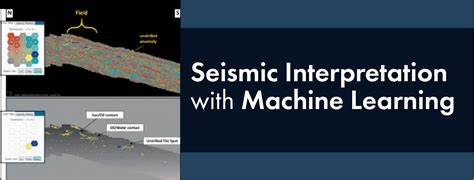Machine Learning in Seismology for Earthquake Prediction
Introduction
Earthquakes are among the most devastating natural disasters, often causing massive destruction and loss of life. Despite advancements in seismic monitoring, accurately predicting earthquakes remains a significant challenge. Traditional seismic models rely on historical data and geological assessments, but they lack the precision needed for reliable forecasting. Machine learning (ML) has emerged as a powerful tool in seismology, offering new ways to analyze seismic data, detect patterns, and improve earthquake prediction models. This article explores the role of ML in seismology, its benefits, challenges, and future potential.
The Need for Advanced Earthquake Prediction Methods
Seismologists have long attempted to predict earthquakes using:
- Historical seismic data to identify patterns in past earthquakes.
- Geophysical measurements such as ground deformation and strain accumulation.
- Statistical models that estimate earthquake probabilities based on previous occurrences.
However, these methods have limitations in accuracy and reliability. Machine learning can enhance these techniques by analyzing large datasets, detecting anomalies, and improving real-time forecasting.
How Machine Learning Works in Earthquake Prediction
Machine learning algorithms process vast amounts of seismic data, identifying patterns that may indicate an impending earthquake. ML applications in seismology include:
1. Pattern Recognition and Anomaly Detection
Machine learning models analyze seismic waveforms and detect patterns associated with earthquakes. They identify small precursor tremors, ground deformations, and changes in seismic velocity that may signal an upcoming event.
2. Real-Time Seismic Monitoring
ML-powered seismic networks continuously monitor seismic activity, identifying anomalies that could indicate an earthquake. By integrating data from seismometers, GPS stations, and satellite observations, ML models improve the accuracy of real-time monitoring systems.
3. Predictive Modeling
ML algorithms use historical and real-time data to predict the likelihood of an earthquake. These models employ:
- Supervised learning, where models are trained on labeled earthquake datasets.
- Unsupervised learning, which identifies unknown patterns in seismic activity.
- Reinforcement learning, where models improve their predictions based on feedback.
Types of Machine Learning Models Used in Seismology
Several ML techniques are applied in earthquake prediction:
1. Artificial Neural Networks (ANNs)
ANNs mimic the human brain’s processing abilities, enabling the model to learn complex seismic patterns. These networks analyze multiple seismic parameters, including:
- Waveform characteristics.
- Changes in seismic frequency.
- Magnitude variations over time.
2. Support Vector Machines (SVMs)
SVMs are used to classify seismic events based on their characteristics. They help differentiate between regular seismic noise and earthquake precursors, improving early warning systems.
3. Random Forest and Decision Trees
Random forest models analyze multiple factors affecting earthquake occurrences, such as:
- Fault zone stress levels.
- Underground fluid movements.
- Previous earthquake magnitudes.
Decision trees use these variables to make hierarchical predictions about seismic activity.
4. Deep Learning and Convolutional Neural Networks (CNNs)
Deep learning models, particularly CNNs, are applied to seismic imaging and wave propagation analysis. They process large-scale seismic datasets to identify hidden patterns that traditional models might miss.
Applications of Machine Learning in Seismology
Machine learning is transforming earthquake prediction in several key areas:
1. Early Warning Systems
ML-powered early warning systems provide real-time alerts before major earthquakes occur. These systems analyze seismic waves and issue warnings to:
- Government agencies for emergency preparedness.
- Infrastructure managers to shut down critical operations.
- Residents in high-risk areas to evacuate or take protective measures.
2. Seismic Hazard Assessment
ML models assess seismic hazards by analyzing historical earthquake data and geological features. This helps urban planners design earthquake-resistant infrastructure and improve disaster response strategies.
3. Aftershock Prediction
Machine learning helps predict aftershocks following a major earthquake. By analyzing fault line stress redistribution, ML models estimate the likelihood, location, and magnitude of aftershocks.
Benefits of Machine Learning in Earthquake Prediction
ML offers several advantages in seismology:
1. Improved Accuracy
Machine learning models process vast amounts of data, identifying patterns that traditional models might miss, leading to more accurate predictions.
2. Faster Data Processing
ML enables real-time analysis of seismic data, reducing the time required to detect and respond to potential earthquakes.
3. Automation and Scalability
ML-driven seismic monitoring systems operate continuously, minimizing the need for manual analysis and expanding monitoring capabilities globally.
4. Better Resource Allocation
More accurate predictions allow governments and disaster management agencies to allocate resources efficiently, focusing on high-risk areas.
Challenges of Machine Learning in Earthquake Prediction
Despite its potential, ML-based earthquake prediction faces several challenges:
1. Data Limitations
ML models require vast amounts of high-quality seismic data, but some regions lack comprehensive datasets, limiting model accuracy.
2. Complexity of Earthquake Mechanics
Earthquakes involve multiple unpredictable factors, making it difficult for ML models to generate consistently reliable forecasts.
3. Computational Costs
Training ML models for seismic analysis requires significant computational power and storage, making implementation costly.
4. False Positives and Negatives
ML models may generate false alarms or fail to detect actual earthquakes, leading to trust issues in early warning systems.
Future Prospects of Machine Learning in Seismology
The future of ML in earthquake prediction looks promising, with several advancements on the horizon:
1. Integration with Artificial Intelligence and IoT
AI-powered IoT devices will enhance real-time seismic monitoring by collecting and analyzing continuous seismic data from sensors worldwide.
2. Improved Deep Learning Models
Advancements in deep learning will lead to more sophisticated models capable of understanding complex seismic patterns and predicting earthquakes more accurately.
3. Blockchain for Data Security
Blockchain technology could be used to securely store and share seismic data, ensuring the authenticity and reliability of earthquake predictions.
4. Global Collaboration
International collaboration between researchers, governments, and tech companies will enhance data sharing, leading to better earthquake prediction models.
Conclusion
Machine learning is revolutionizing seismology by improving earthquake prediction, real-time monitoring, and seismic hazard assessment. While challenges remain, ongoing advancements in AI and data analytics are making earthquake forecasting more reliable. As technology continues to evolve, ML will play a crucial role in disaster preparedness, potentially saving lives and minimizing the impact of earthquakes worldwide.


